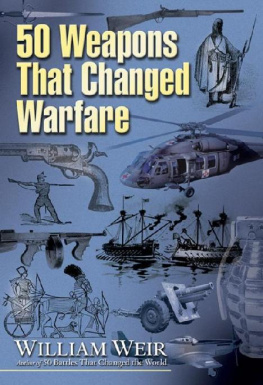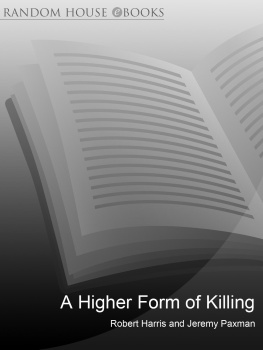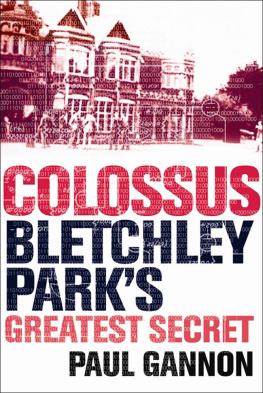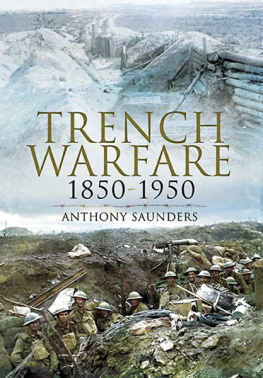Ronald Clark
War Winners

This electronic edition published in 2011 by Bloomsbury Reader
Bloomsbury Reader is a division of Bloomsbury Publishing Plc, 50 Bedford Square, London
WC1B 3DP
Copyright 1979 Ronald W. Clark
The moral right of author has been asserted
All rights reserved
You may not copy, distribute, transmit, reproduce or otherwise make available this publication
(or any part of it) in any form, or by any means (including without limitation electronic, digital,
optical, mechanical, photocopying, printing, recording or otherwise), without the prior written
permission of the publisher. Any person who does any unauthorised act in relation to this
publication may be liable to criminal prosecution and civil claims for damages
ISBN: 9781448206568
eISBN: 9781448206209
Visit www.bloomsburyreader.com to find out more about our authors and their books
You will find extracts, author interviews, author events and you can sign up for
newsletters to be the first to hear about our latest releases and special offers
Contents
Early in 1942 the United States government was forced to make one of the most crucial decisions ever taken by a nation at war. In Europe, where Hitlers forces then occupied most of the continent, the Germans were believed to be at work on an ultimate weapon, a nuclear bomb that would unleash the immense energy locked within the atom. If this weapon could be built, American scientists realized, it could not only make German-held Europe impregnable to attack but might even bring defeat to the United States in the war she was waging against the forces of Japan, Germany and Italy. The only answer was a nuclear weapon of her own, completed before the enemy had made one.
But despite what were then the misty uncertainties of nuclear research, one uncomfortable fact had been discovered: that the heart of any nuclear explosive would have to be formed either of plutonium or of one particular kind of uranium. As far as was known, the first of these two rare elements did not even occur in nature. Plutonium had to be made if it could be made at all in the required amounts within a device then called a pile and today called a nuclear reactor. Although there appeared to be two practical ways of building one, no reactor had yet been constructed anywhere in the world. There was still doubt about whether one could ever be built and a large quiver of questionmarks hung over the prospect of producing a vital nuclear explosive in such a way.
Yet to the Americans, the second alternative, that of making a nuclear explosive from uranium, seemed even less likely to succeed. The problems with uranium were more complex than separating it from the ore in which it was found. Uranium, it was known, occurred as five chemically identical kinds or isotopes; only one of these, uranium-235, could be used to start a nuclear explosion and in uranium as refined from the ore only 0.7 per cent was this vitally important isotope. What is more, any method of separating the 0.7 per cent of uranium-235 from the other chemically identical 99.3 per cent involved unresolved difficulties. Minute quantities of uranium-235 had indeed been produced in the laboratory, but amounts several million times as large would be needed even for a single war-winning bomb.
The Americans knew that there were three possible ways of separating the different uranium isotopes. The gaseous diffusion method, which had already been investigated in Britain, was based on the fact that if a gas containing various uranium isotopes is diffused through the right kind of barrier, the lighter (uranium-235) will get through more quickly. A gas passing through a large number of such barriers would thus contain progressively more and more of the needed material. But the only gas which could be used was uranium hexafluoride, among the most intractable of all gases to handle, while the number of barriers necessary, the scientists warned, would not be dozens, not hundreds, not thousands even, but tens of thousands.
Another potential road to success was to subject uranium to electric and magnetic fields, since each isotope would be deflected differently, a useful fact of nature which appeared to make their separation possible. But the magnets would have to be 100 feet long; enormous supplies of electricity would be needed as well as the most expensive and complicated kind of high-vacuum equipment. Finally there was a process in which the gas was circulated between two concentric pipes, one being steam-heated and one water-cooled, so that the lighter isotope would become concentrated near the inner pipe. Here it was not electricity but steam in other words coal which was needed in immense quantities. Each of these ways of making a nuclear explosive looked outlandishly expensive; each, moreover, was still a dream in the scientists mind, and each might be a complete failure.
The Americans, faced with the challenge, met it head-on. They decided to investigate not only the three methods of separating uranium-235 but also the two possible methods of making plutonium. After a meeting on 23 May 1942, the scientific leaders recommended a programme, later approved, to spend a total of 85,000,000 dollars on a centrifuge plant, a diffusion plant, and an electromagnetic separation plant all three to produce the fissile uranium-235; on a uranium-graphite pile to produce plutonium; and on a plant which would produce the half ton a month of heavy water needed for the second kind of pile. Action followed quickly.
In Chicago a team under Enrico Fermi showed that a nuclear pile would work, a success which led to the building of the 1000 square mile Hanford Engineering Works on the Columbia River north of Pasco. At Columbia University, Harold Urey, the discoverer of heavy water, helped industrial engineers to develop the gas-diffusion process. Despite enormous difficulties the engineers succeeded in creating the huge Clinton plant in Tennessee (now called Oak Ridge) where the nuclear explosive was produced by diffusion of the gas through hundreds of acres of diffusion barriers, spread across more than 50 acres of factory floor and connected by hundreds of miles of piping. At Berkeley, Ernest Lawrence carried out experimental work on the electromagnetic process; and work on the thermal-diffusion process went ahead under P. H. Abelson.
Meanwhile, at Los Alamos, in the deserts of New Mexico, a vast research organization was set up under Robert Oppenheimer. Within it, Americas leading physicists investigated how the nuclear explosive if and when it was ready could be fashioned into the most efficient weapon. In all, more than 2,000,000,000 dollars were to be spent before a plutonium bomb was tested in the Nevada desert in 1945, a uranium bomb dropped on Hiroshima and a plutonium bomb dropped on Nagasaki. Americas decision in 1942 did in fact show that by the mid twentieth century she had acknowledged the overwhelming need to back a potential warwinner with all the resources of men, money and materials that the nation could command.
For the purpose of this book, a scientific war-winner is a science-based weapon which, for a period and in certain circumstances, occasionally in isolation but more usually in combination with other weapons, can turn the tide of a battle, a campaign, or possibly even of a war.
Only rarely, does a single war-winner achieve its aim in isolation, and only rarely does its decisive role remain uneroded for long. Gunpowder, with its ability to reduce city walls, ended siege warfare; the longbow, whose arrows could pierce heavy armour, gave the yeoman the power to topple a social system. But on the battlefield these war-winners lost their effectiveness as siege warfare was abandoned for the war of movement and countermovement, and as the longbow appeared on both sides in any important battle.
Next page





